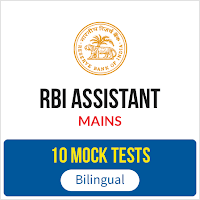Q1. Which of the following efforts fall under Financial Inclusion Plan (FIP) of RBI/government?
(a) Nationalization of banks
(b) Priority Sector Lending (PSL) targets
(c) Zero balance accounts, like BSBDA, Jan-Dhan Account, Small Account, etc.
(d) All of the above
(e) None of the above
Q2. Which of the following is not true regarding Financial Inclusion Plan?
(a) Relaxed and simplified KYC norms for account opening
(b) Mandatory branches in unbanked villages
(c) BSBDA Accounts with minimum balance criteria
(d) Micro branches to be opened in rural area, that can be operated by Business Correspondents
(e) None of the above
Q3. According to the new proposal on PSL, what sub-target is to be created for Micro Enterprises in India by March 2017?
(a) 7 %
(b) 7.5%
(c) 8 %
(d) 8.5 %
(e) None of the above
Q4. Financial Inclusion means provision of –
(a) Financial services namely, payments, remittances, savings, loans and insurance at affordable cost to persons not yet given the same
(b) ration at affordable cost to persons not yet given the same
(c) house at affordable cost to persons not yet given the same
(d) education at affordable costs to persons not yet given the same
(e) None of the above
Q5. What is the full form of ‘FINO’ – a term we see frequently in financial newspapers?
(a) Financial Investment Network and Operations
(b) Financial Inclusion Network and Operations
(c) Farmers’ Investment in National Organization
(d) Farmers’ Inclusion News and Operations
(e) None of the above
Q6. Which of the following is not a function of the RBI?
(a) Maintaining Forex
(b) Deciding Bank Rate, CRR and SLR from time to time
(c) Opening Savings Accounts for general public
(d) Prescribing the Capital Adequancy Ratio
(e) Currency Management
Q7. The names of which of the following rates/ratios cannot be seen in financial newspapers?
(a) Bank Rate
(b) Repo Rate
(c) Statutory Liquidity Ratio
(d) Cash Reserve Ratio
(e) Pulse Rate
Q8. Ten-rupee notes contain the signature of…………….?
(a) Finance Secretary, GOI
(b) Chairman, State Bank of India
(c) Governor, Reserve Bank of India
(d) Finance Minister, GOI
(e) Prime Minister
Q9. Banking and financial services all over the world are regulated usually by the Monetary Authority of the land. Who controls this function in India?
(a) Ministry of Finance
(b) SEBI
(c) RBI
(d) IRDA
(e) FEDAI
Q10. For which of the following reasons RBI has decided to undertake mid-quarter policy reviews?
(1) To re-align its policies
(2) To take steps and ensure smooth flow of credit
(3) To provide guidance to the economy
(a) Only (1)
(b) Only (2)
(c) Only (3)
(d) All (1), (2) & (3)
(e) None of the above
Q11. Cash Reserve Ratio is maintained in the form of?
(a) Government Securities
(b) Balance with Reserve Bank of India
(c) Balance with State Bank of India
(d) All of the above
(e) None of the above
Q12. RBI is empowered to prescribe Cash Reserve Ratio ranging between?
(a) five per cent to twenty per cent of net demand and time liabilities
(b) RBI is empowered to vary CRR between 15 percent and 3 percent
(c) three per cent to forty per cent of net demand and time liabilities
(d) One of the above
(e) None of the above
Q13. The functions of Back office are?
(a) It verifies and settles the deals
(b) It maintains proper record of Book keeping
(c) It submits financial returns of RBI
(d) All of the above
(e) None of the above
Q14. Banks can receive deposits from customers up to a maximum period of?
(a) 10 years
(b) 15 years
(c) 20 years
(d) 25 years
(e) None of the above
Q15. Khandelwal Committee relates to study of ………….. issue in Public Sector Banks?
(a) Capital Adequacy Ratio
(b) Human Resources
(c) Branch Expansion
(d) Foreign Exchange





 The Hindu Review October 2022: Download ...
The Hindu Review October 2022: Download ...
 Direction Questions for SBI Clerk Exam
Direction Questions for SBI Clerk Exam
 RBI JE Salary 2025, Check Salary Structu...
RBI JE Salary 2025, Check Salary Structu...




